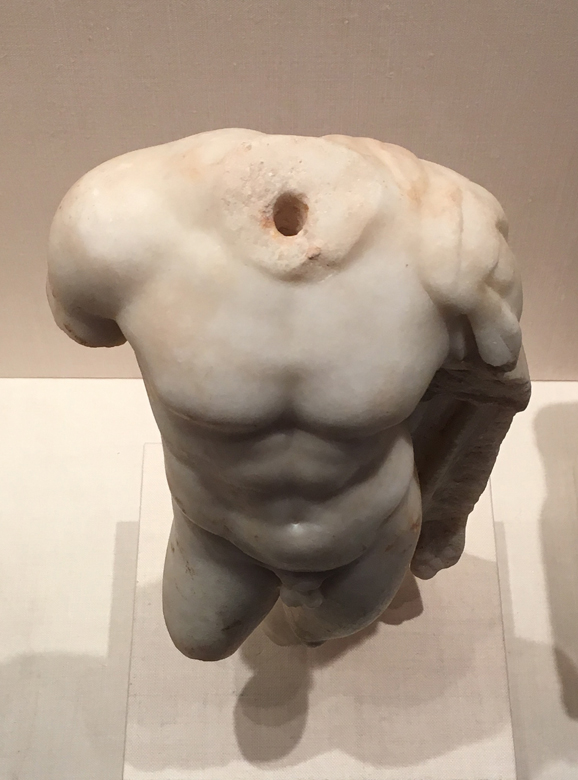CLXXX
He says “Murder!” he says
Every time we kiss
He says “Murder!” he says
At a time like this
He says “Murder!” he says
Is that the language of love?
Wrote Frank Loesser oncet, and Betty Hutton sungit, Dinah Shore too
“It’s a German School daub… people love to see the grimaces of the damned,” said Stendhal of Memling’s Last Judgment.
Putsch comes to tschov
No saber does not always mean to lack a sword
Selfie of Leonidas before Thermopylae – who needs David?
Dead souls walking
Tweetocracy, mon amour
Klemgard, E.N., Lubricating Greases: Their Manufacture and Use. New York: Reinhold Publishing Corp., 1937.
Langworthy, C.F. and A.D. Holms, “Digestibility of Some Vegetable Fats,” USDA Bulletin 505. Washington, D.C.: United States Department of Agriculture, February, 1917.
Cressey, P.F., “Chinese Traits in European Civilization: A Study in Diffusion,” American Sociological Review, vol. 10 (1945).
A critical lack of tomorrow
This painting [The Apotheosis of Henri IV and the proclamation of the regency Marie de Médicis on 14 May 1610] originally occupied the focal point at the end of the Gallery of the cycle of historical episodes and allegories painted by Rubens for Marie de Médicis at the Palais du Luxembourg. It is also central to the theme of the series depicting Marie de Médicis assuming the Regency by popular demand on the death of Henry IV. The large and dynamic composition, linking the group of the Queen to that of the King with a double volute, is a powerful example of the curvilinear rhythms of Baroque art. [Michel Laclotte and Jean-Pierre Cuzin. Diana de Froment and Frances Roxburgh, trans. The Louvre: French and Other European Paintings. Paris: Editions Scala/London: Philip Wilson Publishers Ltd., 1982, p. 188]
And so, some remnant of the West [compared to what?] rafts home again after its Idiodyssey.
And who weeping more briny bucketsful than Agamemnon?
Land ho!
Who you callin ho’?
Worcester, C.R.G., The Junks and Sampans of the Yangtze. 2 vols. Statistical Department of the Inspectorate General of the Customs, Shanghai, 1947-8.
The famous Greek vase [krater] with the scene of the vendor of tuna fish…
[4th century, B.C., Mandralisca Museum at Cefalù]
Pell-Walpole, W.T., “Gasses in Bronze,” Mémoires du Congrès International de Fonderies. Brussels, Belgium, 1951.
Hatfield, W.H., Cast Iron in the Light of Recent Research. 3rd ed. London: Charles Griffin & Co., Ltd. 1948.
Melior, J. W., “The Scumming of Mazarine Blue,” Trans. British Ceramic Society, vol. 35, 1936.
The hue, named in honor of His Grand Eminence Jules Raymond Cardinal Mazarin, Bishop of Menz and successor to Cardinal Richelieu as Chief Minister to Louis XIV, to whom he bequeathed the “Mazarine diamonds,” many of which later came within the purview of the Louvre.
There exists too, a species of papillon, Polyommatus semiargus, vernacularly called the Mazarine Blue, the male’s wings being a deep azure, almost purple.
The Mazarine’s range is a wide one: throughout continental Europe, unto Scandinavia, even reaching into the Arctic Circle, Asia, the Middle East, and North Africa. Thought extinct in Britain since the early 20th century, occasional “vagrants” have been sighted from time to time, feeding as they do on red clover…
The Great Wall
jes’ turn that W upside-down
Endocrynia, mon amour
Siegfried drinks the ocean and burps:
Too much salt!
Pulsifer, W.H., Notes for a History of Lead. New York: D. Van Nostrand Co. Inc. 1888.
Actors well practiced in Standinsky Technique
Schunk, E., “The Yellow Coloring Matter of Sophora Japonica,” Journal of the Chemical Society of London. vol. 67, 1895.
Ames, J.W. and Gaither, “Barnyard Manure: Production, Composition, Conservation, Reinforcement, and Value,” Ohio Agriculture Experiment Station Bulletin 246, 1919.
De Jode, P. Various Academy Figures Newly Compiled from Life with Enormous Labor and at Great Cost, Most Convenient for Young People Who Enjoy the Art of Drawing. Antwerp, 1629
Pieces of ape! Pieces of ape! caws the macaw with the speech ‘pediment
Is there a “seemly” haste?
Nightingale, S.J., Tin Soldiers, British Non-ferrous Metals Research Association, London, 1932.
Langworthy, C.F. and A.D. Holms, “Studies on the Digestibility of Some Animal Fats,” USDA Bulletin 507. Washington, D.C.: United States Department of Agriculture, March, 1917.
Mellor, J.W., “Crazing and Feeling of Glazes,” Trans. British Ceramic Society, vol. 35, 1936.
Dead macaw squawking
After Philopoemen died, (183 B.C.), Pausinias wrote: “Greece ceased to bear good men.” [Description of Greece, 8.52]
The Lamination of Christ
Oy!
Ow!
Nazarine blue (Mary wore)
A clear and pleasant danger
Among the principal Greek inventions:
First, How: As in how Iphigenia felt (q.v., c.f. Isaac).
As in how Achilles slew Hector.
Or how Odysseus and Ajax argued over the armor of Achilles.
Or how Achilles, now a shade, yearned for news of his son…
Then later, The Beautiful: As in how beautiful.
And we have found these inventions indispensable, possibly inescapable.
Or at any rate we would need Ariadne’s help – unless we have become too bullish…
Cornejo, R.F., “Care of Barnyard Manure,” B.S. thesis. Department of Agronomy, The Pennsylvania State University, University Park, Pennsylvania, June, 1913.
Searle, A.B., Modern Brickmaking. New York: D. Van Nostrand Co. 1911.
Cowher, Lou, W.H. Hunley, and LaDow Johnston, How to Build a Muzzle Loading Rifle, Target Pistol and Powder Horn. Portsmouth, Ohio: The National Muzzle Loading Rifle Association, Inc. 1958.
Large, E.D., The Advance of Fungi. London: Jonathan Cape, 1940.
Goodrich, L.C. “Notes on a Few Early Chinese Bombards,” Journal of Chemical Education, vol. 24, 1947.
Shankman, R.V. “O.E.D. on a Grecian Urn,” Micrography Today, vol. 69, 2017.
Zimmer, G.F. “The Use of Meteoric Iron by Primitive Man,” Journal Iron and Steel Institute, vol, 94, no. 2, London, 1916.
Uhlig H.H. Corrosion Handbook. New York: John Wiley & Sons, Inc. 1948.
Carpenter, H.C.H., “An Egyptian Axe Head of Great Antiquity,” Nature, vol. 130, London, 1932.
Christensen, C.M., The Molds and Man. Minneapolis: University of Minnesota Press, 1951.
Wagmore, Dame Edith. Elders of Zion: Protocols or Mere Suggestions. London: Darcy & Co. 1923.
Pestalozzi, A. “Notes on the Engineering of Certain Alpine Funiculì,” Journal of Organic Engineering, vol. 666, 1905.
Williams, B. A Coney Bibliography of the Mind. San Francisco: City Lights, 2099.
Omnicom. Joy is Everywhere. Cincinnati, Ohio: Proctor and Gamble, 2016.
Pernice, B. “I was a Pink Marble Atrium for the FBI,” A Likely Story Magazine, vol. 8, number 3, New York, New York, it’s a helluva town…


